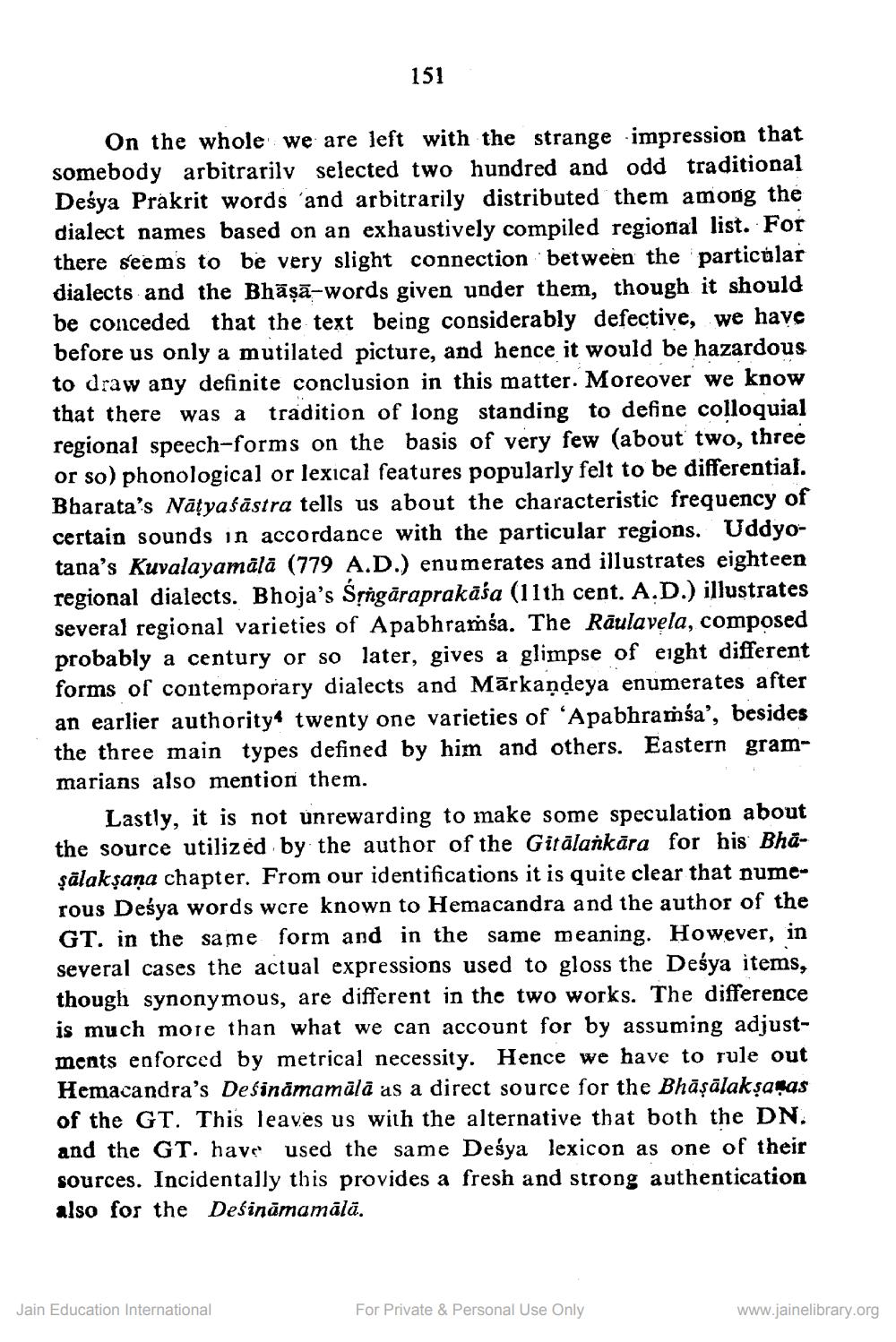________________
151
On the whole we are left with the strange impression that somebody arbitrarily selected two hundred and odd traditional Deśya Prakrit words and arbitrarily distributed them among the dialect names based on an exhaustively compiled regional list. For there seems to be very slight connection between the particular dialects and the Bhāṣā-words given under them, though it should be conceded that the text being considerably defective, we have before us only a mutilated picture, and hence it would be hazardous to draw any definite conclusion in this matter. Moreover we know that there was a tradition of long standing to define colloquial regional speech-forms on the basis of very few (about two, three or so) phonological or lexical features popularly felt to be differential. Bharata's Nāțyaśāstra tells us about the characteristic frequency of certain sounds in accordance with the particular regions. Uddyotana's Kuvalayamālā (779 A.D.) enumerates and illustrates eighteen regional dialects. Bhoja's Srngāraprakāśa (11th cent. A.D.) illustrates several regional varieties of Apabhramśa. The Rāulavela, composed probably a century or so later, gives a glimpse of eight different forms of contemporary dialects and Mārkandeya enumerates after an earlier authority4 twenty one varieties of 'Apabhramśa', besides the three main types defined by him and others. Eastern grammarians also mention them.
Lastly, it is not unrewarding to make some speculation about the source utilized by the author of the Gitālankāra for his Bhäşālakṣaṇa chapter. From our identifications it is quite clear that numerous Deśya words were known to Hemacandra and the author of the GT. in the same form and in the same meaning. However, in several cases the actual expressions used to gloss the Desya items, though synonymous, are different in the two works. The difference is much more than what we can account for by assuming adjustments enforced by metrical necessity. Hence we have to rule out Hemacandra's Desinamamālā as a direct source for the Bhāsālak samas of the GT. This leaves us with the alternative that both the DN. and the GT. have used the same Deśya lexicon as one of their sources. Incidentally this provides a fresh and strong authentication also for the Dešināmamālā.
Jain Education International
For Private & Personal Use Only
www.jainelibrary.org




